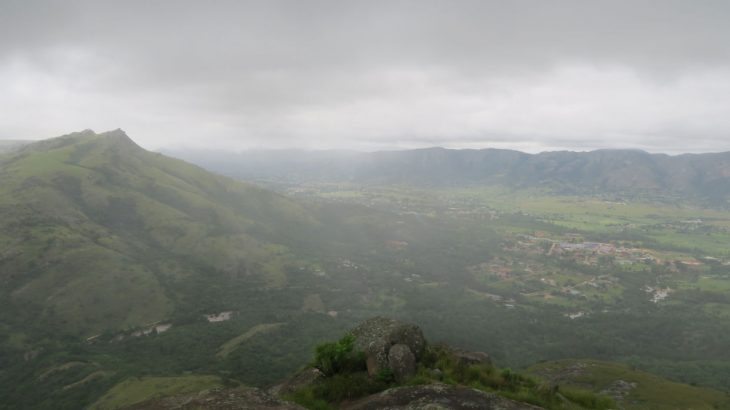A small country filled with big hearts and even bigger smiles, Swaziland, is well worth a visit in its own right and not just as a pit stop en-route to Kruger or Maputo. Sandwiched between South Africa and Mozambique, Swaziland is one of the smallest countries south of the equator, but what it lacks in size it makes up for in its cheery character and varied landscapes.
Below are some of the top places to visit and a selection of personal highlights:
Mlilwane Wildlife Sanctuary – The main draw of this park is the wonderful landscape, and due to the lack of predators, it is possible to explore the area on foot, with many great walking routes to choose from. The hike up to Nyonyane Moutain is a good one and offers stunning views from the top. There are also options for horse riding and mountain biking.
We stayed at Sondzela BackPackers, which is located in the south of the park. This is actually a Lonely Planet ‘top pick’ as well and I can see why. Offering basic but comfortable rondavels (sleeps three), as well as dormitories, this place has a very laid back and friendly vibe, and the staff are welcoming. Cheap and tasty communal dinners (R75 for a hearty impala stew, and if you have the room, you can even go back for seconds!) are served at 6pm to the sound of the dinner drum. If you are given the opportunity to be shuttled down to the main rest camp for a traditional dancing ceremony, definitely go. It was one of the highlights of my time in Swaziland.
You’ll be expected to pay an additional bed levy/tourist tax, and it is worth having enough cash with you, the card machine was not working when we visited.
Swazi Candles – This is a great stop, and a perfect place to pick up souvenirs, with all of the candles handmade on site. You can find candles of all colours and shapes, including many hand moulded animals, with rhino and elephant personal favourites. There is also a great little coffee shop opposite, serving what is possibly the best carrot cake in the world!
Hlane Royal National Park – The royal national park – Swaziland’s largest national park – and home to white rhino, elephant, leopard and lion. The trails are narrower and a bit more overgrown than Mlilwane adding to a slightly ‘wilder’ feel. Whilst it does advertise that the trails are accessible by 2WD, I would suggest that this is optimistic in places! Take note of the huge number of snares disaplyed at the main gate.
There are two main camps: Bhubesi camp- self catering cottages sleeping four. Clean, comfortable and well furnished, with kitchen equipment and braai facilities, and Ndlovu camp – self catering units, cottages and camping. Here there is also a bar, restaurant and gift shop overlooking a waterhole which is visited by elephant, white rhino and hippos.
Mbabane – Despite being the Captial, there is not a great deal for the tourist here, but the small National Museum is worth popping into if you are passing by. We stayed at The Place guesthouse, which is tucked away in a relaxing courtyard and was impeccably organised.
Manzini– This is actually Swaziland’s biggest town, with the main “tourist attraction” being the market, selling fruit, veg and fresh food, alongside fabrics and handicraft. You can find some nice little gems. I bought a skirt which didn’t quite fit and the lady altered for me in five minutes whilst I waited!
Mkhaya Game Reserve – Offering good opportunities for intimate game viewing and birding, alongside more upmarket accommodation options. Semi-open stone huts of varying sizes (up to a 6 sleeper), with fantastic views. Game walks and drives can be included in the accommodation price. The reserve is known for its large population of white and black rhino.
General facts and tips:
• SA Rand accepted everywhere (Swazi Lilangeni and SA Rand are linked). Change given in a mix of Swazi Lilangeni and SA Rand.
• Gas – Diesel 50ppm easily available and costs are generally a bit lower than neighbouring South Africa. Around R12 per litre.
• Credit cards not always accepted or card machines temperamental, best to pay cash for activities and accommodation inside the parks.
• Main roads across the country are tar and really good condition. With the exception of some trails in the parks, if taken carefully, most routes are sedan friendly – especially Mlilwane – but check before booking accommodation (Bhubesi camp in Hlane is 4×4 access).







 Jessica has an interest for sustainable tourism, and is particularly passionate about Southern Africa and all it has to offer. She is currently overlanding across 10 countries in the bottom half of the continent, and creating these resources en-route, to help others plan their own African adventures.
Jessica has an interest for sustainable tourism, and is particularly passionate about Southern Africa and all it has to offer. She is currently overlanding across 10 countries in the bottom half of the continent, and creating these resources en-route, to help others plan their own African adventures.